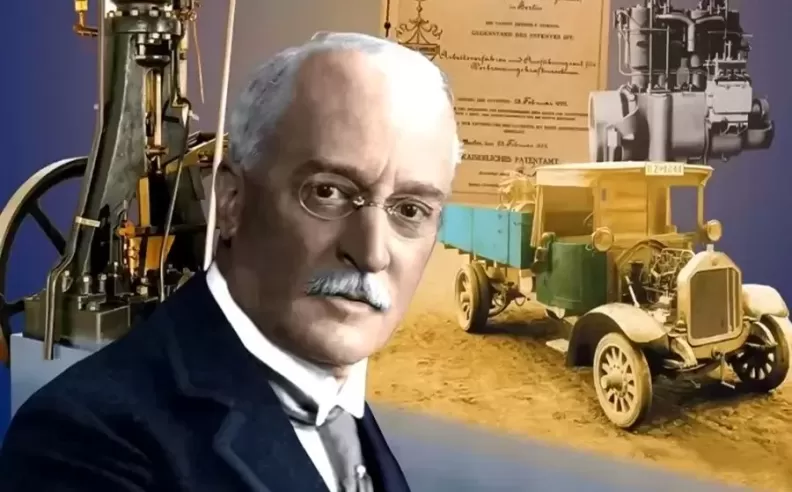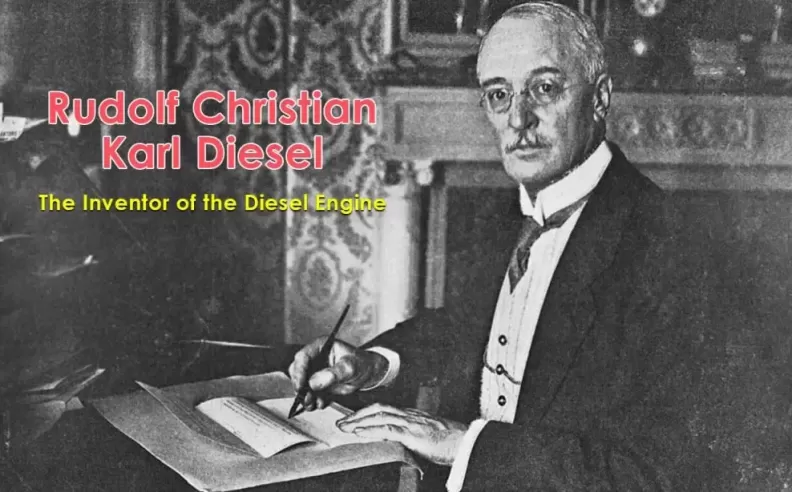
The death of Rudolf Christian Karl Diesel, the brilliant inventor behind the Diesel engine, remains shrouded in mystery to this day. On the fateful night of September 29, 1913, Diesel boarded the SS Dresden in Antwerp, Belgium, en route to London. Little did he or anyone else know that this would be the last time he was seen alive. Diesel's lifeless body was discovered floating in the English Channel days later. The question that has lingered for over a century is: Who killed Rudolf Diesel?
Rudolf Diesel's life was dedicated to innovation. Born in Paris in 1858 to German parents, he would go on to develop the Diesel engine, a revolutionary machine that transformed transportation and industry worldwide. His invention was not only more efficient than its predecessors but also significantly reduced fuel consumption. Diesel engines played a pivotal role in shaping the modern world.

Diesel's voyage aboard the SS Dresden was meant to be a routine business trip. He had recently faced financial difficulties and intended to meet with British representatives to discuss the future of his engine. However, what followed was far from routine.
On the night of his disappearance, Diesel dined alone in the ship's restaurant. Witnesses recall that he appeared agitated and anxious. He left behind personal belongings, including his coat and hat. The next morning, when the ship arrived in London, Diesel was nowhere to be found. The discovery of his body floating in the English Channel on October 10, 1913, raised more questions than answers.
Theories and Suspects
Suicide:
The initial assumption was that Diesel took his own life. Given his financial struggles and the distress he exhibited that night, suicide seemed plausible. However, Diesel's friends and family vehemently denied this possibility, asserting that he was in good spirits before the trip.
Industrial Espionage:
Another theory revolves around corporate interests. Some believe that powerful entities in the emerging oil industry may have wanted Diesel's engine designs for themselves. Sabotage or even murder to gain control of his patents could have been motives.
Political Intrigue:
The geopolitical climate of the time cannot be ignored. World War I was on the horizon, and Diesel's engine had potential military applications. Some suggest that foreign governments, fearing the strategic significance of his work, may have been involved in his disappearance.
Personal Vendetta:
A less explored theory suggests that Diesel may have had personal enemies who wanted to harm him. Disputes with business associates or rivals could have led to a deadly confrontation.
Conclusion
The death of Rudolf Diesel remains an unsolved mystery. Over a century has passed since that ill-fated night, and various theories have been proposed. However, concrete evidence is scarce, and the truth remains elusive. The circumstances surrounding his death may never be fully understood.
Rudolf Diesel's legacy lives on in the form of the engine that bears his name. His invention continues to drive industries and transportation worldwide. While his death remains a mystery, his contributions to science and technology endure, serving as a reminder of his enduring impact on the modern world.

Wael is an automotive content writer specializes in creating written content for Motor 283. Producing a wide range of content, including blog posts, articles, product descriptions, reviews, and technical guides related to cars, trucks, motorcycles, and other vehicles, with an unprecedented passion for cars, and motorcycles.